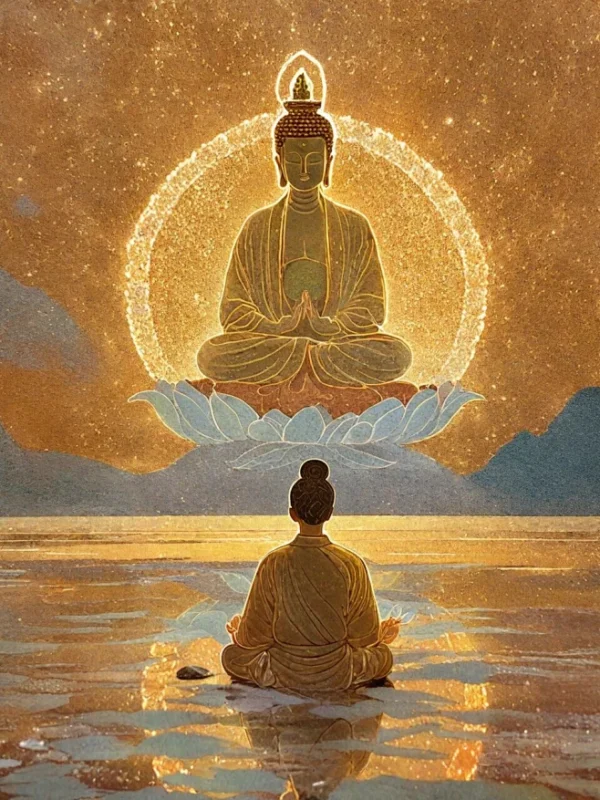Author: Tashi, a Tibetan Buddhist scholar endorsed by monastic authorities, shares Dharma through UNESCO-backed meditation programs and accessible teachings. Her modern interpretations of sacred texts, recognized by global institutes, revitalize Rimé tradition while making profound wisdom approachable for contemporary seekers.
Table of Contents
Navigating the Buddhist Landscape: A Friendly Guide to Different Schools Buddhism. It’s more than just meditation and orange robes. It’s a vast and fascinating world with diverse schools and practices.
Understanding these different schools of Buddhism can feel daunting. But don’t worry! I’m here to guide you through it.
What Exactly Is a “School” of Buddhism?
Think of it like different branches of a tree. All the branches share the same root – the teachings of the Buddha.
But each branch has grown in its own unique direction. Each school emphasizes different aspects of the teachings.
They also developed unique practices and interpretations.
Historically, Buddhism split into two major branches: Theravada and Mahayana.
Theravada: Often called the “School of the Elders.” It emphasizes the original teachings of the Buddha.
It focuses on individual liberation through meditation and ethical conduct. It is prevalent in Southeast Asia (Sri Lanka, Thailand, Myanmar).
Mahayana: Meaning “Great Vehicle.” It emphasizes the bodhisattva ideal. Bodhisattvas are beings who postpone their own enlightenment to help others.
Mahayana is widespread in East Asia (China, Japan, Korea, Vietnam).
Exploring the Mahayana Branch: Schools of Mahayana Buddhism
The schools of Mahayana Buddhism are incredibly diverse. Let’s explore some of the most influential:
Pure Land Buddhism: This school emphasizes faith in Amitabha Buddha. Practitioners chant his name to be reborn in the Pure Land.
The Pure Land is a paradise where enlightenment is easily attained. It’s a popular school in East Asia.
Zen Buddhism: Known for its emphasis on meditation and direct experience. Zen aims to awaken the mind to its true nature.
It uses practices like zazen (seated meditation) and koans (paradoxical riddles). Zen has two main schools: Rinzai and Soto.
Tibetan Buddhism: A complex and rich tradition that incorporates elements of Mahayana, Vajrayana (Tantric Buddhism),
and indigenous Tibetan beliefs. It has four main schools: Nyingma, Kagyu, Sakya, and Gelug.
Tiantai Buddhism: This school emphasizes the Lotus Sutra. It seeks to harmonize all Buddhist teachings into a comprehensive system.

A Closer Look at Zen: Rinzai and Soto
Zen Buddhism, particularly the Rinzai and Soto schools, offers a fascinating study in contrasting approaches. Rinzai Zen,
known for its rigorous training and use of koans, aims for sudden enlightenment. Soto Zen, on the other hand,
emphasizes gradual awakening through consistent zazen practice. Understanding these differences can help you appreciate the depth and breadth of Zen.
Tibetan Buddhism: A World of its Own
Tibetan Buddhism, with its rich tapestry of practices and philosophies, deserves special attention.
The Gelug school, known for its emphasis on philosophical study, and the Kagyu school, renowned for its meditation lineages,
offer distinct paths to enlightenment. Exploring these schools can provide a deeper understanding of the Vajrayana tradition.
Finding Your Path: Which School is Right for You?
There’s no single “right” school. The best school for you depends on your personality, interests, and goals.
Do you prefer a structured approach with clear rules and guidelines?
Are you drawn to meditation and direct experience?
Do you feel a strong connection to a particular teacher or lineage?
Consider these questions as you explore the different schools.

Schools of Buddhism for Beginners: A Simple Guide
If you’re new to Buddhism, start with the basics. Read introductory books.
Visit local Buddhist centers. Talk to practitioners from different schools. Don’t be afraid to ask questions.
Comparing Theravada and Mahayana Schools of Buddhism
- Understanding the differences between Theravada and Mahayana is crucial.
- Theravada emphasizes individual liberation, while Mahayana focuses on helping all beings.
- Theravada emphasizes the historical Buddha, while Mahayana recognizes a wider range of Buddhas and bodhisattvas.
History and Development of Different Schools of Buddhism in India
- The history and development of different schools of Buddhism in India is a fascinating story.
- Buddhism originated in India in the 6th century BCE. Over time, different schools emerged,
- each with its own unique interpretations and practices. These schools spread throughout Asia, adapting to different cultures and environments.
Schools of Tibetan Buddhism: Gelug, Kagyu, Nyingma, Sakya
- The schools of Tibetan Buddhism: Gelug, Kagyu, Nyingma, Sakya each have unique characteristics.
- The Gelug school emphasizes philosophical study. The Kagyu school emphasizes meditation lineages.
- The Nyingma school emphasizes ancient teachings. The Sakya school emphasizes tantric practices.

Schools of Zen Buddhism: Rinzai and Soto Differences
The schools of Zen Buddhism: Rinzai and Soto differences are significant. Rinzai emphasizes koans and sudden enlightenment.
Soto emphasizes zazen and gradual enlightenment. Both schools offer valuable paths to awakening.
Schools of Pure Land Buddhism: Practices and Beliefs
The schools of Pure Land Buddhism: Practices and beliefs center around faith in Amitabha Buddha.
Practitioners chant his name to be reborn in the Pure Land. This practice is accessible to everyone, regardless of their background or abilities.
Schools of Buddhism Chart: A Visual Comparison of Lineages
A schools of Buddhism chart: A visual comparison of lineages can be incredibly helpful.
It allows you to see the relationships between different schools at a glance. Many online resources offer charts and diagrams.
Summary
Buddhism is a diverse tradition with many schools. Theravada and Mahayana are the two major branches.
Schools of Mahayana Buddhism include Pure Land, Zen, and Tibetan Buddhism. Each school has its own unique practices and interpretations.
Finding the right school for you depends on your individual needs and preferences. Explore the different schools and find the path that resonates with you.

